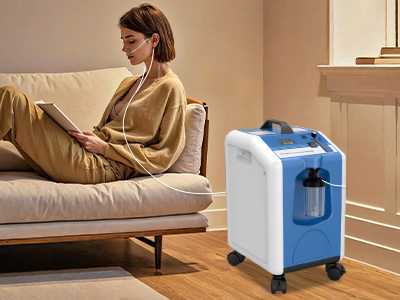23 May 2025
There’s nothing quite as underrated as the simple act of breathing—until it becomes a daily challenge. Home oxygen therapy transforms breathlessness from a constant battle into a manageable companion. It’s not a symbol of restriction; it’s a gateway to freedom. With modern equipment and thoughtful planning, oxygen therapy at home doesn’t spell confinement—it signals liberation.
Gone are the days when respiratory support required hospital walls. Today, living rooms, backyards, and even local cafés become the backdrop for vibrant living—oxygen tank in tow.

Understanding Home Oxygen Therapy
Home oxygen therapy delivers a steady supply of purified oxygen to the lungs, boosting blood oxygen saturation and relieving symptoms of hypoxia. It's not just a treatment—it's a physiological reset.
Doctors prescribe it for a myriad of conditions: chronic obstructive pulmonary disease (COPD), pulmonary fibrosis, severe asthma, cystic fibrosis, and even heart failure. When your lungs can't do all the lifting, supplemental oxygen steps in like a loyal understudy.
Types of Oxygen Delivery Systems
Not all oxygen delivery systems are created equal. The three musketeers of home oxygen include:
Oxygen Concentrators: These sleek machines extract nitrogen from ambient air, funneling purified oxygen straight into the lungs. They’re efficient and endlessly refillable.
Compressed Gas Cylinders: Think of these as the OGs—metal tanks filled with high-pressure oxygen. Reliable, but heavy and limited by volume.
Liquid Oxygen Systems: Ultra-chilled and energy dense, these units offer higher capacity in smaller containers.
And then there’s the fork in the road: stationary units that stay put in your home versus portable concentrators designed for mobility. Choose your champion wisely.
Making Home Oxygen Therapy Part of Daily Life
Oxygen therapy works best when it’s woven seamlessly into the fabric of your daily rhythm. Morning stretches with tubing in place. Cooking dinner with cannula clipped gently behind your ears. Watching TV while your concentrator hums like a white-noise machine.
Even your hobbies can adapt. Reading, gardening, knitting, painting—oxygen doesn't interfere, it accompanies. With clever tubing management and a little creativity, you’re still in the driver’s seat of your day.
Mobility and Staying Active
Oxygen users aren’t meant to gather dust. With the advent of portable concentrators, the great outdoors is still open for business.
Running errands, walking the dog, even light exercise become not only possible but beneficial. Toting around a sleek portable device gives you oxygen autonomy. Some units even charge in the car or work with external batteries for long-haul travel.
Activity breeds vitality, and oxygen therapy makes that possible without compromising safety or comfort.

Safety First: Oxygen and the Home Environment
Oxygen is life-giving—but in the presence of flame, it’s a firestarter. No smoking, no open flames, and absolutely no makeshift barbecues in the living room.
Keep concentrators away from heat sources and ensure cords and tubing don’t become tripping hazards. Proper storage and maintenance are non-negotiable—dust-free filters, unobstructed vents, and routine checks keep the system humming along.
And don’t forget backup power—storms don’t care about your SpO₂.
Emotional and Psychological Well-being
The emotional journey with home oxygen therapy can feel like a tightrope walk. First, there’s shock, then frustration, and eventually, acceptance.
But with acceptance comes a surprising peace. The cannula may feel awkward at first, but it becomes second nature. Talking openly with family, joining support groups, or even just journaling can help process the shift. And yes—therapy (the mental kind) is welcome too.
Living well isn’t just physical—it’s emotional endurance.
Monitoring Progress and Communicating with Providers
Data is your ally. Pulse oximeters are like miniature oracles, revealing how your oxygen levels fluctuate with activity and rest.
Maintain a symptom journal. Are you more fatigued? Getting frequent headaches? Shortness of breath during mild tasks? These red flags deserve attention. Regular check-ins with your care team ensure that your therapy evolves as you do.
The goal isn’t just survival—it’s optimization.
Enhancing Quality of Life with Oxygen Therapy
Living with oxygen therapy is not a downgrade—it’s an upgrade to better energy, sharper cognition, and improved mood. Patients often report fewer hospital visits and more time spent doing what they love.
Whether it’s dancing at your granddaughter’s wedding or finally finishing that novel, oxygen therapy breathes momentum into everyday life. Real stories from real people are proof: you can flourish with a cannula and confidence.
Conclusion: A Breath of Empowerment
Home oxygen therapy isn’t a pause—it’s a continuation. A reimagining of what living well looks like. With the right tools, mindset, and support, patients don’t just get by—they thrive.
So take a deep breath, literally and figuratively. The future is still wide open.
Keywords: oxygen therapy
Originally published 23 May 2025, updated 23 May 2025.